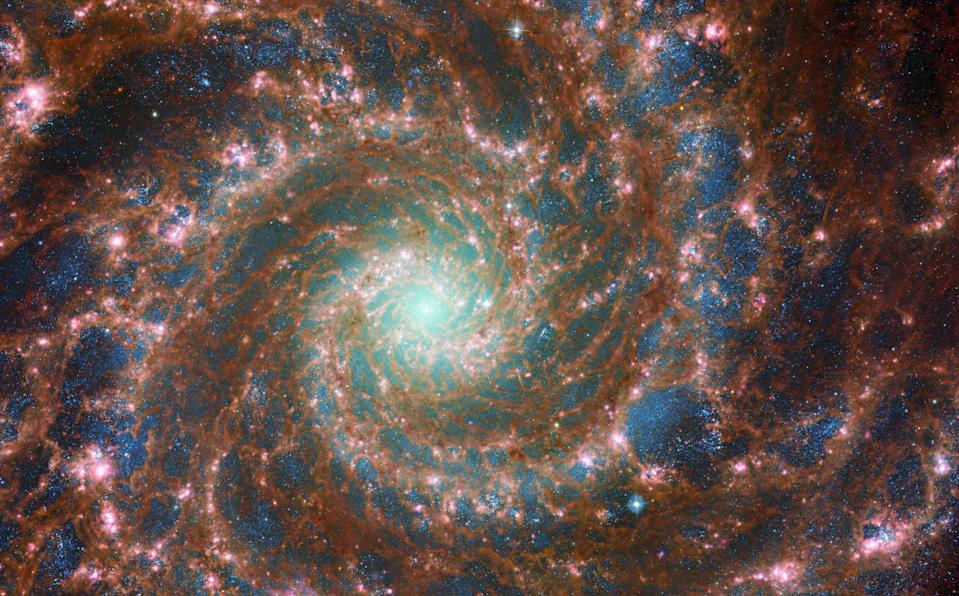Unveiling the Universes Hidden Secrets: The Discovery of Missing Matter Using Fast Radio Bursts

The debate over the composition of the universe has been ongoing for years, with some arguing that dark matter is holding it together and others claiming that it doesn't exist despite possible detections. However, a more intriguing aspect is that astronomers believe the universe is missing matter, and now they say they've found evidence of it.
In a new study published in Nature Astronomy, researchers from Caltech and the Center for Astrophysics | Harvard & Smithsonian (CfA) have detected this "missing matter." The matter was considered "missing" because of how thinly it was spread among the various galaxies and halos of the universe. It is so diffuse that it is exceptionally hard to account for.
The researchers relied on fast radio bursts (FRBs) to help illuminate the matter that lies between those distant FRBs and us here on Earth. "The FRBs shine through the fog of the intergalactic medium, and by precisely measuring how the light slows down, we can weigh that fog, even when it's too faint to see," explained Liam Connor, an assistant professor at Harvard and lead author on the new study.
The team looked at 69 FRBs, ranging in distance from around 11.74 million to 9.1 billion light-years away from us. FRB 20230521B, which is located 9.1 billion light-years away, is now the most distant FRB ever recorded. Despite having detected more than a thousand FRBs, we've only managed to pinpoint around one hundred or so to their specific host galaxies. However, by relying on the FRBs, the researchers were able to find evidence of the matter.
These findings will help us better understand the universe and how galaxies grow. They could also help us unravel some of the greatest mysteries of the early universe, including how the universe expanded so quickly since the Big Bang. And researchers say this is just the beginning of the use of FRBs in cosmology. A future radio telescope from Caltech will help find and localize up to 10,000 FRBs per year, which should dramatically enhance our understanding of these distant radio bursts.
In conclusion, the search for the universe's missing matter has taken a significant step forward with this new study. The use of FRBs in astronomy is just beginning, and we can expect more exciting discoveries in the future as we continue to explore the vastness of space.
Remarkably illuminating, 'Unveiling the Universes Hidden Secrets: The Discovery of Missing Matter Using Fast Radio Bursts' shed new light on a cosmic riddle that has been underexplored – an insightful blend science and wonder allied with cutting-edge astronomy.














